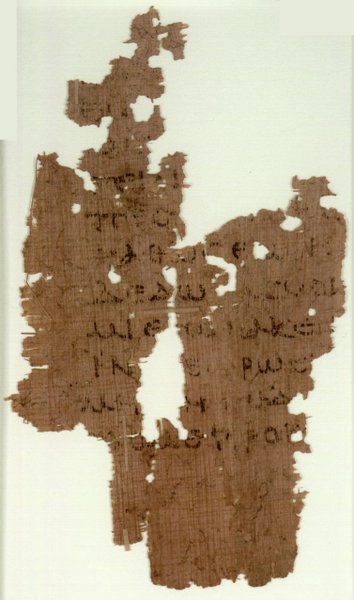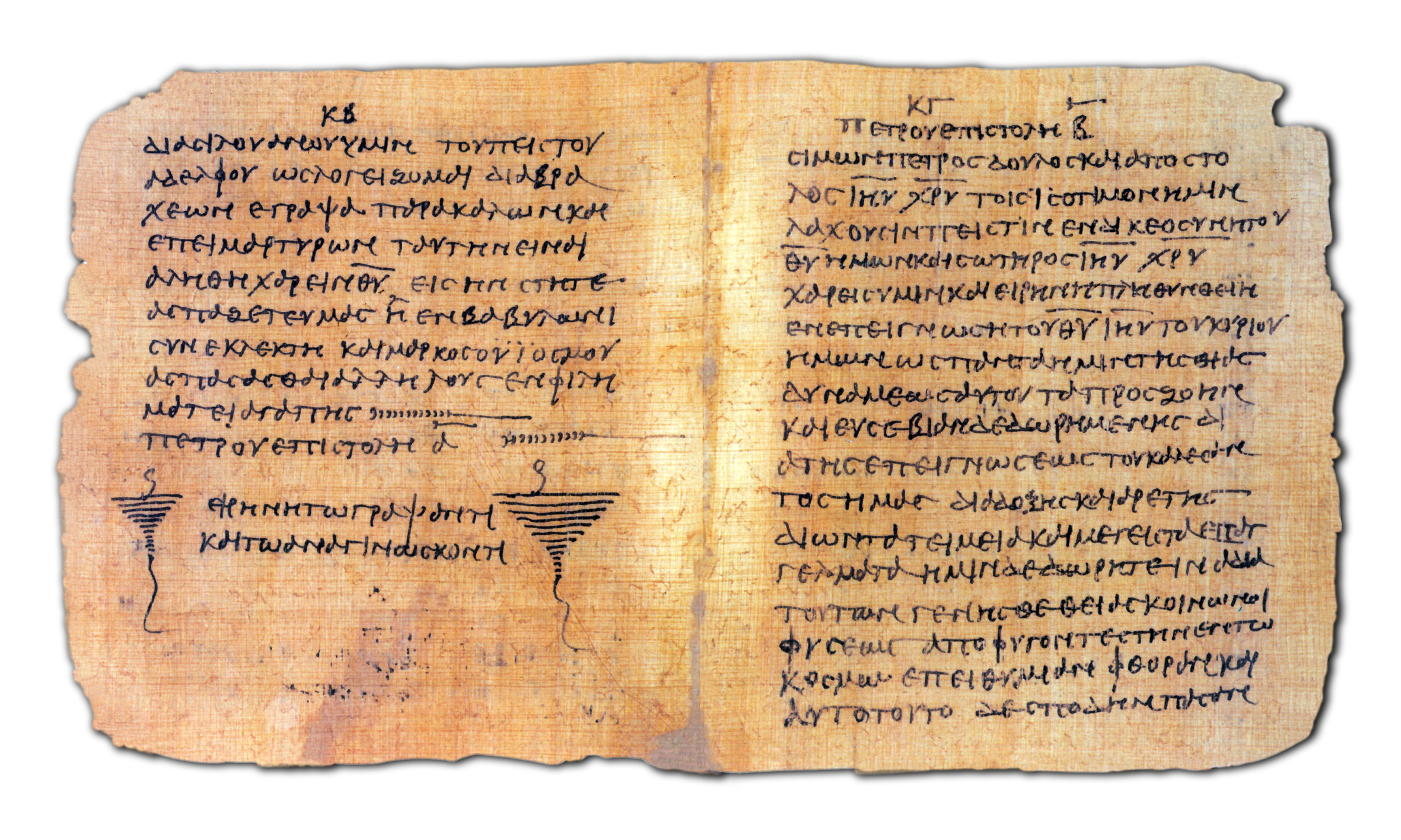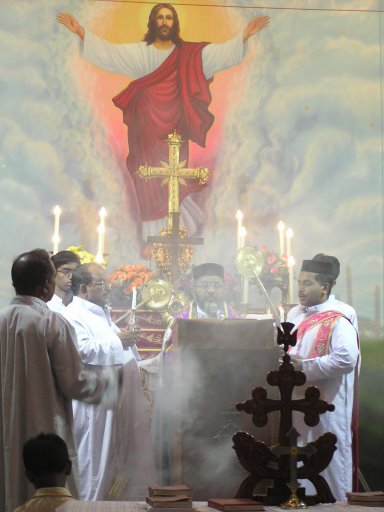|
BWV 183
(They will put you under banishment), , is a church cantata by Johann Sebastian Bach. He composed it in Leipzig for Exaudi, the Sunday after Ascension, and first performed it on 13 May 1725. It is the fifth of nine cantatas on texts by Christiana Mariana von Ziegler, with whom Bach collaborated at the end of his second cantata cycle. It begins with quote from the Gospel, set for the bass as the vox Christi. For a closing chorale she used a stanza of Paul Gerhardt's "". The theme of the cantata is the reaction of the believer to the announcement of hardship and the hope for the assistance of the promised Holy Spirit. Bach scored the cantata for four vocal soloists (soprano, alto, tenor and bass), a four-part choir and a Baroque instrumental ensemble of two oboes d'amore, two oboes da caccia, a violoncello piccolo, strings and basso continuo. Unusually, all four oboes play together in two recitatives. History and words Bach wrote the cantata in his second year in Leipzig for ... [...More Info...] [...Related Items...] OR: [Wikipedia] [Google] [Baidu] |
Church Cantata (Bach)
Throughout his life as a musician, Johann Sebastian Bach composed Bach cantata, cantatas for both List of secular cantatas by Johann Sebastian Bach, secular and sacred use. He composed his church cantatas for use in the Lutheranism, Lutheran church, mainly intended for the occasions of the liturgical year. Bach's Nekrolog, Bach's ''Nekrolog'' mentions five cantata cycles: "Fünf Jahrgänge von Kirchenstücken, auf alle Sonn- und Festtage" (Five year-cycles of pieces for the church, for all Sundays and feast days), which would amount to at least 275 cantatas,Alfred Dörffel. Bach-Gesellschaft Ausgabe Volume 27: ''scores:Bach-Gesellschaft Ausgabe/Thematic Catalogue, Thematisches Verzeichniss der Kirchencantaten No. 1–120''. Breitkopf & Härtel, 1878. Introduction, p. VI or over 320 if all cycles would have been ideal cycles.Günther Zedler''Die Kantaten von Johann Sebastian Bach: Eine Einführung in die Werkgattung''.Books on Demand, 2011. p. 24–25/ref> The extant cantatas ... [...More Info...] [...Related Items...] OR: [Wikipedia] [Google] [Baidu] |
Tenor
A tenor is a type of male singing voice whose vocal range lies between the countertenor and baritone voice types. It is the highest male chest voice type. Composers typically write music for this voice in the range from the second B below middle C to the G above middle C (i.e. B2 to G4) in choral music, and from the second B flat below middle C to the C above middle C (B2 to C5) in operatic music, but the range can extend at either end. Subtypes of tenor include the ''leggero'' tenor, lyric tenor, spinto tenor, dramatic tenor, heldentenor, and tenor buffo or . History The name "tenor" derives from the Latin word '' tenere'', which means "to hold". As noted in the "Tenor" article at ''Grove Music Online'': In polyphony between about 1250 and 1500, the enor was thestructurally fundamental (or 'holding') voice, vocal or instrumental; by the 15th century it came to signify the male voice that sang such parts. All other voices were normally calculated in relation to the ten ... [...More Info...] [...Related Items...] OR: [Wikipedia] [Google] [Baidu] |
Chorale Cantata (Bach)
There are 52 chorale cantatas by Johann Sebastian Bach surviving in at least one complete version. Around 40 of these were composed during his second year as Thomaskantor in Leipzig, which started after Trinity Sunday 4 June 1724, and form the backbone of his Bach's chorale cantata cycle, chorale cantata cycle. The eldest known Bach cantata, cantata by Bach, an early version of ''Christ lag in Todes Banden, BWV 4, Christ lag in Todes Banden'', Bach-Werke-Verzeichnis, BWV 4, presumably written in 1707, was a chorale cantata. The last chorale cantata he wrote in his second year in Leipzig was Wie schön leuchtet der Morgenstern, BWV 1, ''Wie schön leuchtet der Morgenstern'', BWV 1, first performed on Palm Sunday, 25 March 1725. In the ten years after that he wrote at least a dozen further chorale cantatas and other cantatas that were added to his chorale cantata cycle. Lutheran hymns, also known as chorales, have a prominent place in the liturgy of that Christian denomination, denomi ... [...More Info...] [...Related Items...] OR: [Wikipedia] [Google] [Baidu] |
Paraclete
''Paraclete'' (; ) is a Christian biblical term occurring five times in the Johannine texts of the New Testament. In Christian theology, the word commonly refers to the Holy Spirit and is translated as 'advocate', 'counsellor', or 'helper'. Etymology The English term ''Paraclete'' comes from the Koine Greek word (). A combination of ('beside/alongside') and ('to call'), the word first appears in the Bible in John 14:16.Kieffer, René, "John," in John Barton and John Muddiman, eds., ''The Oxford Bible Commentary''. Oxford University Press, 2007, 987. René Kieffer further explains the development of the meaning of this term: The word is a verbal adjective, often used of one called to help in a lawcourt. In the Jewish tradition the word was transcribed with Hebrew letters and used for angels, prophets, and the just as advocates before God's court. The word also acquired the meaning of 'one who consoles' (cf. Job 16:2, Theodotion's and Aquila's translations; the LXX has the ... [...More Info...] [...Related Items...] OR: [Wikipedia] [Google] [Baidu] |
Gospel Of John
The Gospel of John () is the fourth of the New Testament's four canonical Gospels. It contains a highly schematic account of the ministry of Jesus, with seven "Book of Signs, signs" culminating in the raising of Lazarus (foreshadowing the resurrection of Jesus) and seven "I am (biblical term), I am" discourses (concerned with issues of the Split of early Christianity and Judaism, church–synagogue debate at the time of composition) culminating in Thomas the Apostle, Thomas's proclamation of the risen Jesus as "my Lord and my God". The penultimate chapter's concluding verse set out its purpose, John 20:31, "that you may believe that Jesus is the Christ, the Son of God, and that believing you may have life in his name." John reached its final form around AD 90–110, although it contains signs of origins dating back to AD 70 and possibly even earlier. Like the three other gospels, it is anonymous, although it identifies an unnamed "disciple whom Jesus loved" as the source o ... [...More Info...] [...Related Items...] OR: [Wikipedia] [Google] [Baidu] |
Farewell Discourse
In the New Testament, wikisource:Bible (American Standard)/John#14:1, chapters 14–17 of the Gospel of John are known as the Farewell Discourse given by Jesus to eleven of his Disciple (Christianity), disciples immediately after the conclusion of the Last Supper in Jerusalem in Christianity, Jerusalem, the night before Crucifixion of Jesus, his crucifixion.''John'' by Gail R. O'Day, Susan Hylen 2006 , Chapter 15: The Farewell Discourse, pp. 142–168 The discourse is generally seen as having distinct components. First, Jesus tells the disciples that he will be going away to the God the Father, Father, and that he will send the Holy Spirit to guide the disciples. Jesus bestows peace on the disciples and The New Commandment, commands them to love one another. The expression of the unity of love between Jesus and his Father, in the Spirit, as it applies to his disciples in the love of Christ, is a key theme in the discourse, manifested by several reiterations of the New Commandment: ... [...More Info...] [...Related Items...] OR: [Wikipedia] [Google] [Baidu] |
First Epistle Of Peter
The First Epistle of Peter is a book of the New Testament. The author presents himself as Peter the Apostle. The ending of the letter includes a statement that implies that it was written from "Babylon", which may be a reference to Rome. The letter is addressed to the " chosen pilgrims of the diaspora" in Asia Minor suffering religious persecution. Authorship The authorship of 1 Peter has traditionally been attributed to the Apostle Peter because it bears his name and identifies him as its author (1:1). Although the text identifies Peter as its author, the language, dating, style, and structure of this letter have led most scholars to conclude that it is pseudonymous. Dale Martin 2009 (lecture). . Yale University. Accessed 22 July 2013Lecture 24 (transcript)/ref> Many scholars argue that Peter was not the author of the letter because its writer appears to have had a formal education in rhetoric and philosophy, and an advanced knowledge of the Greek language,Achtemeier, Pa ... [...More Info...] [...Related Items...] OR: [Wikipedia] [Google] [Baidu] |
Feast Of The Ascension
The Feast of the Ascension of Jesus Christ (also called the Solemnity of the Ascension of the Lord, Ascension Day, Ascension Thursday, or sometimes Holy Thursday) commemorates the Christian belief of the bodily Ascension of Jesus into Heaven. It is one of the ecumenical (shared by multiple Christian denomination, denominations) feasts of Christian churches, ranking with the feasts of the Passion (Christianity), Passion and Pentecost. Following the account of that the risen Jesus appeared for 40 days prior to his Ascension, Ascension Day is traditionally celebrated on a Thursday, the fortieth day of Easter according to inclusive counting, although some Christian denominations have moved the observance to the following Sunday, sometimes called Ascension Sunday. The day of observance varies by ecclesiastical province in many Christian denominations, as with Lutherans and Catholics, for example. Ascensiontide refers to the ten-day period between the Feast of the Ascension and the Fe ... [...More Info...] [...Related Items...] OR: [Wikipedia] [Google] [Baidu] |
List Of Church Cantatas By Liturgical Occasion
The following is a list of church cantatas, sorted by the liturgical occasion for which they were composed and performed. The genre was particularly popular in 18th-century Lutheran Germany, although there are later examples. The liturgical calendar of the German Reformation era had, without counting Reformation Day and days between Palm Sunday and Easter, 72 occasions for which a cantata could be presented. Composers such as Telemann composed cycles of church cantatas comprising all 72 occasions (e.g. '' Harmonischer Gottes-Dienst''). Such a cycle is called an "ideal" cycle, while in any given liturgical year feast days could coincide with Sundays, and the maximum number of Sundays after Epiphany and the maximum number of Sundays after Trinity could not all occur. In some places, of which Leipzig in Johann Sebastian Bach's time is best known, no concerted music was allowed for the three last Sundays of Advent, nor for the Sundays of Lent (apart when Annunciation fell on a Sund ... [...More Info...] [...Related Items...] OR: [Wikipedia] [Google] [Baidu] |
Basso Continuo
Basso continuo parts, almost universal in the Baroque era (1600–1750), provided the harmonic structure of the music by supplying a bassline and a chord progression. The phrase is often shortened to continuo, and the instrumentalists playing the continuo part are called the ''continuo group''. Forces The composition of the continuo group is often left to the discretion of the performers (or, for a large performance, the conductor), and practice varied enormously within the Baroque period. At least one instrument capable of playing chords must be included, such as a harpsichord, organ, lute, theorbo, guitar, regal, or harp. In addition, any number of instruments that play in the bass register may be included, such as cello The violoncello ( , ), commonly abbreviated as cello ( ), is a middle pitched bowed (sometimes pizzicato, plucked and occasionally col legno, hit) string instrument of the violin family. Its four strings are usually intonation (music), tuned i ..., ... [...More Info...] [...Related Items...] OR: [Wikipedia] [Google] [Baidu] |
Violoncello Piccolo
The violoncello ( , ), commonly abbreviated as cello ( ), is a middle pitched bowed (sometimes plucked and occasionally hit) string instrument of the violin family. Its four strings are usually tuned in perfect fifths: from low to high, C2, G2, D3 and A3. The viola's four strings are each an octave higher. Music for the cello is generally written in the bass clef; the tenor clef and treble clef are used for higher-range passages. Played by a ''cellist'' or ''violoncellist'', it enjoys a large solo repertoire with and without accompaniment, as well as numerous concerti. As a solo instrument, the cello uses its whole range, from bass to soprano, and in chamber music, such as string quartets and the orchestra's string section, it often plays the bass part, where it may be reinforced an octave lower by the double basses. Figured bass music of the Baroque era typically assumes a cello, viola da gamba or bassoon as part of the basso continuo group alongside chordal instruments su ... [...More Info...] [...Related Items...] OR: [Wikipedia] [Google] [Baidu] |
Oboe Da Caccia
The oboe da caccia (; literally "hunting oboe" in Italian), also sometimes referred to as an oboe da silva, is a double reed woodwind instrument in the oboe family, pitched a fifth below the oboe and used primarily in the Baroque period of European classical music. It has a curved tube, and in the case of instruments by Eichentopf (and modern copies of same), a brass bell, unusual for an oboe. Its range is close to that of the cor anglais—that is, from the F below middle C (notated C4 but sounding F3) to the D above the treble staff (notated D6 but sounding G5). The oboe da caccia is thus a transposing instrument in F. The ''notated'' range is identical to that of the soprano baroque oboe, and with a good reed, all registers speak very easily. Johann Sebastian Bach tended to favor the middle and lowest registers, however, perhaps because they are the most characteristic ones for this instrument. Development The instrument was likely invented by J.H. Eichentopf of Leipzi ... [...More Info...] [...Related Items...] OR: [Wikipedia] [Google] [Baidu] |





